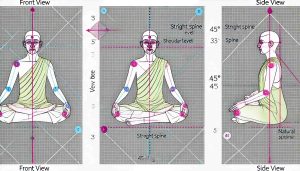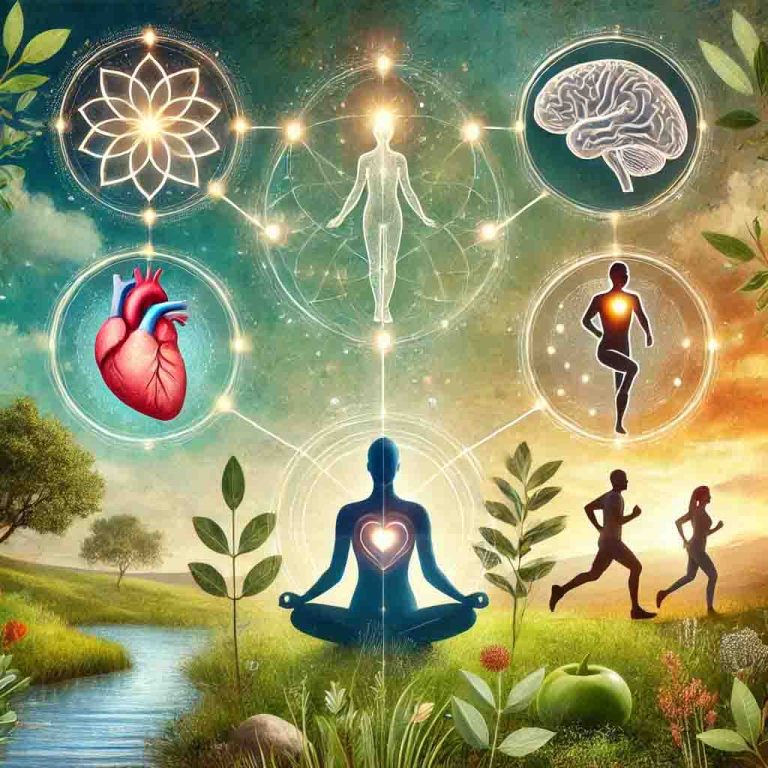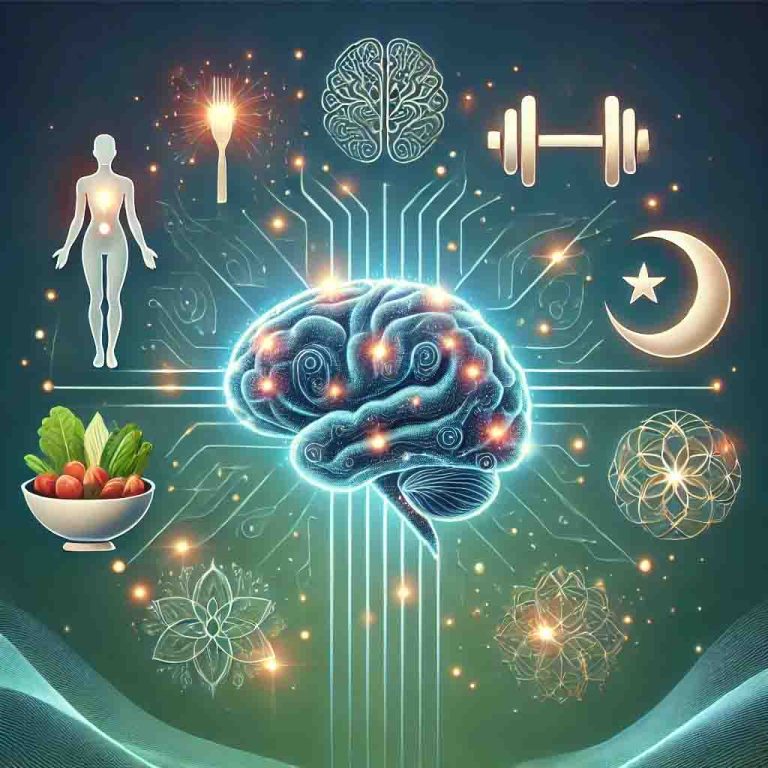Pranayama: Master Breath Control for Serenity and Focus
Pranayama is an ancient yogic practice focused on breath control, which aims to enhance mental and physical well-being. Regular practice can improve lung capacity, reduce stress and anxiety, enhance emotional regulation, and promote a meditative state that leads to greater self-awareness and overall wellness.
Breath is life. Mastering your breath can unlock unparalleled levels of serenity and focus amidst life’s chaos. The ancient yogis believed that controlling one’s breath could influence both body and mind – a concept that modern science now supports with substantial evidence.
Understanding these techniques isn’t just for seasoned practitioners; even someone navigating a busy lifestyle can integrate these practices effortlessly. Whether you’ve felt the dawn’s calm while practicing simple techniques outdoors or you’re seeking new methods to manage stress after work, you’ll find comprehensive guidance based on meticulous research and firsthand experiences in this article. Now, let’s explore how breath control can reshape your wellness routine.
The Essence of Pranayama

At its core, Pranayama encapsulates the essence of breath control intertwined with our vitality. The practice goes beyond merely inhaling and exhaling; it acts as a bridge between our conscious and unconscious states. When you engage in Pranayama, you are not just controlling your breath but also fine-tuning your life force—prana.
The ancient yogis recognized that an unregulated breath could contribute to unease and sickness, while a disciplined approach could cultivate tranquility and health.
As we breathe, our emotions and mental clarity fluctuate with each breath cycle. This connection is why Pranayama serves as a tool for reducing stress and enhancing concentration. For instance, engaging in specific techniques can ease anxiety by activating the parasympathetic nervous system, which is responsible for our relaxation response.
When you strategically employ these breathing methods, you invite a wave of calmness and heightened awareness.
It’s indeed fascinating how something so simple can yield such powerful effects on our overall well-being.
One notable technique is Nadi Shodhana, or alternate nostril breathing, which balances the left and right hemispheres of the brain, promoting mental clarity and emotional stability. This helps practitioners center themselves during moments of chaos or uncertainty. In my experience, setting aside just five minutes each day for this practice enhances focus throughout daily activities.
Expanding Your Practice
To deepen your journey within Pranayama, consider incorporating shoulder rolls or gentle neck stretches before practicing. Such movements increase blood flow to the respiratory system, allowing for greater lung capacity and relaxation.
By embracing these practices regularly, you can unveil the profound benefits that come from understanding both physical sensations and emotional responses through breath control. This knowledge naturally leads to an exploration of how these techniques enhance overall wellness in daily life.
Physical and Mental Benefits
Practicing Pranayama regularly leads to transformative physical and mental improvements, validated by both ancient traditions and contemporary studies. Research indicates that regular practice can boost lung capacity by an impressive 20% within just a few months. This increase is vital for physical fitness and overall vitality. When we breathe deeply and fully, we bring in more oxygen that invigorates our cells, leading to numerous health benefits.
Physical Health Improvements
Beyond increased lung capacity, the physiological benefits of Pranayama are far-reaching. A consistent practice has been associated with lower blood pressure, enhanced cardiovascular health, improved respiratory function, and even a boosted immune system.
Consider the calming effect of Ujjayi breathing; studies suggest it can significantly reduce asthma symptoms while facilitating better oxygen exchange in the lungs. By employing this technique, many practitioners have experienced tangible improvements in their overall respiratory efficiency, making each inhalation count for their well-being. Pranayama serves not only as a stress-reliever but also as a robust ally in fostering physical resilience against chronic conditions.
Mental Health Enhancements
The mental health benefits are equally profound. Findings published in the International Journal of Yoga indicate that Pranayama practices activate the parasympathetic nervous system—a crucial bodily response that triggers relaxation. This activation can lead to meaningful reductions in stress levels and anxiety.
Anecdotal evidence from practitioners shows that techniques like Nadi Shodhana (alternate nostril breathing) result in significant clarity of thought and emotional stability. It’s fascinating to witness how something as simple as breath can regulate emotional responses, helping people find balance amid chaos.
Incorporating these techniques into your daily routine may improve your emotional well-being and transform your engagement with life itself. When you feel more centered and present, all aspects of your life—from work to relationships—benefit considerably.
With these compelling benefits spotlighting the impact of breath control, exploring various techniques will enhance our understanding and practice on the path to holistic well-being.
Popular Pranayama Techniques

Several Pranayama techniques cater to different needs and skill levels, each bringing unique benefits to the practitioner. Exploring these methods allows both beginners and seasoned yogis to discover which works best for them. Starting with simpler techniques can make the practice approachable for newcomers, while experienced practitioners often find value in revisiting these foundational methods for refinement.
Ujjayi (pronounced oo-JAY-ee)
One of the most celebrated techniques is Ujjayi, often referred to as “Victorious Breath.” This method calms the mind and enhances focus, establishing a connection between breath and movement in yoga.
To initiate this technique, sit comfortably with your spine straight, as alignment is key to effective breathing. Inhale deeply through your nose, filling your lungs completely. As you exhale slowly through your nose, gently constrict the back of your throat to produce a whispering sound that resonates within you. This audible quality of the breath serves as a tool for maintaining concentration, allowing you to anchor your awareness in each cycle of inhalation and exhalation.
Nadi Shodhana (pronounced NAH-dee show-DAH-nah)
Next, we have Nadi Shodhana, or Alternate Nostril Breathing. This technique balances energy and calms the nervous system.
To perform Nadi Shodhana, begin by sitting comfortably with your left hand resting on your knee. Close your right nostril with your thumb. Inhale deeply through your left nostril, savoring the fullness of breath, then close it using your ring finger while opening the right nostril. Exhale fully through the right side and follow with an inhale through the same nostril before closing it again. Unclasp your thumb to exhale through the left nostril, completing one cycle. This alternating process not only regulates breath but also harmonizes both hemispheres of the brain.
Kapalabhati (pronounced kah-pah-lah-BAH-tee)
Another impactful technique is Kapalabhati, known as “Skull Shining Breath.” It’s invigorating and cleansing, making it perfect for energizing sessions.
Begin by sitting comfortably, ensuring that you’re relaxed yet alert. Start with a deep inhalation and then exhale sharply through your nose while contracting your abdominal muscles. The essence of Kapalabhati lies in this forceful expulsion of breath; allow natural inhalation to occur passively. The rhythm becomes an energizing wave that lifts both spirit and energy level.
Mastering these techniques fosters an enhanced understanding of the interconnectedness between body and mind. Transitioning into daily practices can provide profound effects on overall well-being.
Advanced Pranayama Techniques
While Ujjayi, Nadi Shodhana, and Kapalabhati form the foundation of pranayama practice, there exists a rich tapestry of advanced techniques, each offering unique benefits. As your practice deepens, you might explore:
Cooling Practices
- Sitali (she-TAH-lee): Often called the “cooling breath,” this technique involves inhaling through a curled tongue. Particularly beneficial during summer months or when feeling overheated, it effectively reduces body temperature and calms the mind.
- Sitkari (sit-KAR-ee): An alternative cooling breath performed through clenched teeth, creating a gentle hissing sound. This variation offers similar benefits to Sitali and is perfect for those who cannot curl their tongue.
Energizing Practices
- Bhastrika (bhus-tri-kah): Known as “bellows breath,” this energizing technique uses forceful abdominal breathing to increase vitality and clear the respiratory system. Its warming nature makes it ideal for morning practice.
- Surya Bhedana (SOOR-yah bhe-DAH-nah): This right-nostril breathing technique stimulates the solar energy within the body, increasing warmth and energy levels. Best practiced when needing an energy boost.
Calming Practices
- Bhramari (BRAH-muh-ree): The “bee breath,” characterized by a humming sound during exhalation, excels at reducing anxiety and preparing the mind for meditation.
- Chandra Bhedana (CHAN-drah bhe-DAH-nah): Left-nostril breathing that activates cooling energy, making it perfect for calming the nervous system and preparing for rest.
Foundation Practices
- Dirga (DEER-gah): This three-part breath builds awareness by sequentially breathing into the belly, ribcage, and upper chest, creating a solid foundation for advanced practices.
- Sama Vritti (SAH-mah VRIT-tee): Equal breathing establishes a balanced rhythm between inhale and exhale, essential for deeper pranayama work.
As you explore these advanced techniques, remember:
- Begin gradually and progress mindfully
- Practice on an empty stomach
- Start with short durations
- Listen to your body and respect its limits
- Seek qualified guidance for advanced practices
Integrating Breath Control in Daily Life

To truly harness the power of Pranayama, it’s essential to weave it seamlessly into the fabric of your everyday life. This isn’t just a series of isolated practices; it’s about creating a harmonious relationship with your breath that permeates everything you do. Think of each technique as a tool in your toolbox for navigating the complexities of modern living.
Daily Routine Integration
Begin each day with five minutes dedicated to Nadi Shodhana, or alternate nostril breathing. This practice not only calms the mind but also balances the two hemispheres of the brain, preparing you for whatever challenges lie ahead. Picture it as tuning an instrument before a concert; when you’re properly attuned, you’re more likely to hit those high notes throughout the day.
If you’re feeling overwhelmed midday, try Ujjayi breathing. Just slowing down your breath using this technique can rejuvenate your energy. Take a moment during lunch breaks to close your eyes and focus on breathing deeply through your nose, listening to the soft sound of your breath. This gentle reminder brings alertness back without relying on caffeine or sugary snacks.
Further, consider how you might apply these techniques during moments of stress. When facing a busy work environment or navigating family responsibilities, incorporating calm breathing methods can create an oasis of tranquility. For instance, before entering a challenging meeting or conversation, take three deep inhalations using Kapalabhati—this invigorating breath helps center your mind and prepare you emotionally.
Building a Habit
Consistency is vital in integrating Pranayama into your daily life. Set reminders on your phone for short sessions throughout the day—perhaps right after waking up, during lunch, and before bedtime. It can also help to build these practices around existing habits; for example, doing Ujjayi breathing while heating up dinner or practicing deep breaths during morning coffee.
Sweetening these little pockets of time with intentional breaths can enrich your experience greatly and foster deeper mindfulness throughout your routine.
Lastly, don’t forget to reflect on the changes you’re experiencing. Keeping a journal where you note how you felt before and after each session can solidify these practices in your memory, allowing you to observe progression over time—both physically and emotionally. This reflection reinforces positive experiences associated with breath control.
Embracing these techniques isn’t about adding yet another task to your day; rather it’s about transforming how you engage with each moment, making mindfulness woven into the very rhythm of your life.
As you enhance your understanding of these practices, you can explore their deeper implications for achieving calmness and tranquility within oneself. The journey continues toward discovering greater serenity in your life.
Achieving Spiritual Calm

At its core, spiritual calm is a state of profound inner peace and equilibrium that many seekers yearn for. It’s not just about quieting the mind; it’s about creating a holistic connection between body, breath, and spirit.
In practice, this serenity can often feel elusive, but through dedicated Pranayama techniques, such as Kapalabhati, the journey towards achieving it becomes clearer. This dynamic breathing technique acts as a cleansing fire for the respiratory system and can lead to a purified mind, opening the door to spiritual awareness.
When practitioners utilize Kapalabhati—often referred to as “skull shining breath”—they engage in rapid inhalations and forceful exhalations. This rhythm does more than just oxygenate the body; it ignites energy within, clearing stagnant emotions and thoughts.
In my experience, practicing Kapalabhati creates an almost immediate sensation of clarity—like waking from a foggy dream. The rush of energy revitalizes not only the physical body but initiates an internal purification process that can set the stage for spiritual exploration.
Many seasoned practitioners share similar sentiments, noting that the use of breath control techniques enriches their meditation experiences. They report that when their breath is purposeful and deliberate, they find themselves able to dive deeper into meditative states. The space between breaths becomes a portal where spiritual insights may begin to flow more freely.
However, it’s crucial to approach these practices with intention. Integrating mindful breathing into your daily routine aids in reinforcing discipline while fostering a tranquil mindset.
As you embrace consistent practice, you can develop an intimate relationship with your breath—a relationship foundational to experiencing spiritual calm. One effective way to start this is by allocating just a few minutes each day for focused breathing exercises. Over time, this commitment can transform chaotic thoughts into a gentle stream of consciousness that promotes inner balance.
By committing to these techniques regularly, individuals can unlock deeper self-awareness and foster a sense of tranquility that influences various aspects of life. Let’s now explore how these practices can further enhance vitality and well-being.
Enhancing Vitality Through Practice

Vitality is more than just feeling awake; it’s about harnessing your body’s energy and keeping it flowing optimally. When you engage in consistent Pranayama practice, you’re cultivating a calmer mind and revitalizing your physical state. This dynamic breathing technique balances the energy channels within your body and sharpens mental clarity, leading to increased strength and vigor—enhancements felt both physically and mentally.
As you incorporate different Pranayama techniques into your routine, you’ll discover how they cater specifically to your body’s needs. For instance, Ujjayi, often referred to as the “victorious breath,” promotes better oxygenation. This improved breathing pattern allows more oxygen to reach your cells, giving you an energetic boost that can enhance everything from workouts to daily tasks. Practitioners also report enhanced concentration, allowing them to remain focused longer on their duties or passions.
Another valuable technique is Nadi Shodhana, or alternate nostril breathing. Engaging in this practice not only helps reduce stress but promotes balanced energy levels throughout the body. By consciously alternating between nostrils during inhalation and exhalation, you harmonize the left and right hemispheres of your brain, alleviating feelings of anxiety that can drain vitality.
Kapalabhati, known for its invigorating nature, serves a distinct purpose as well. Through rapid inhalations and forceful exhalations, this technique facilitates detoxification and increases alertness. It’s like a reset button for your internal systems, enabling efficient function. Many practitioners find this energetic practice especially useful before engaging in intellectually demanding tasks or physical activities.
Here’s a comparison of Pranayama techniques and their specific impacts on vitality:
| Technique | Primary Benefit | Secondary Benefit |
|---|---|---|
| Ujjayi | Improved oxygenation | Enhanced concentration |
| Nadi Shodhana | Stress reduction | Balanced energy levels |
| Kapalabhati | Detoxification | Increased alertness |
As you engage more deeply with these practices, recognizing their influence on overall wellness is vital. You’ll likely observe shifts in your response to stressors and new ways to manage both energy spikes and lulls throughout your daily life. Consistent practice offers the remarkable opportunity not just to cope with life’s challenges but to thrive amidst them.
For further guidance on integrating these techniques into your lifestyle, explore resources available at Andean Trail Kitchen, where you can connect with others on a similar journey toward enhanced health and vitality through Pranayama.
By embracing Pranayama as part of your daily routine, you can unlock a profound sense of vitality that nurtures both mind and body. This path towards enhanced energy and focus is open for anyone willing to explore!
Conclusion
The journey through pranayama is both profound and transformative. From the fundamental techniques of Ujjayi, Nadi Shodhana, and Kapalabhati to the advanced practices like Bhramari and Bhastrika, each breath technique offers a unique gateway to enhanced well-being. Through regular practice, these ancient techniques reveal their timeless wisdom, helping us navigate modern life’s challenges with greater ease and awareness.
As science continues to validate what yogis have known for millennia, the power of conscious breathing becomes increasingly relevant in our fast-paced world. Whether you’re seeking stress relief, emotional balance, spiritual growth, or enhanced vitality, pranayama offers a practical path forward. The beauty of these practices lies in their accessibility—requiring only your attention and breath, they can be practiced almost anywhere, at any time.
Remember that pranayama is not just about controlling the breath; it’s about understanding and nurturing the vital force that animates our being. As you integrate these practices into your daily life, you may discover that the simple act of conscious breathing opens doors to profound transformation, leading to greater physical health, mental clarity, and spiritual well-being.
The breath is indeed our constant companion from first to last, and through pranayama, we learn to make every breath count. Whether you’re just beginning your journey or deepening an established practice, the possibilities for growth and discovery through pranayama are boundless.







